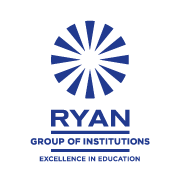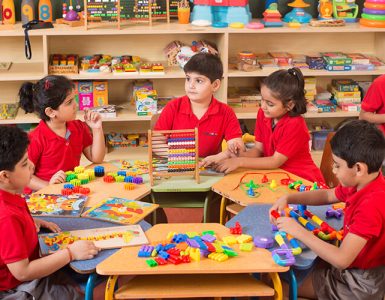The Need to Evolve Education
While traditional education has roots and offers structure and discipline the rapidly changing world demands an adaptive and forward thinking educational approach. The digital age children, often known as ‘Generation Z’ are growing up in a different world compared to their predecessors. For them technology is not a luxury but a norm. Cultural exchange has become an occurrence due to globalization. In such a context can we rely on age teaching methods? Emerging trends in education indicate otherwise. Innovation, flexibility and a curriculum that extends beyond textbooks are essential to prepare students for real world challenges.
The Foundations of Innovative Schools
Revamping School Infrastructure, for the Future
Classroom walls hold stories. In the past classrooms used to be filled with blackboards rows of desks and a teachers desk at the front. However todays classrooms are evolving into spaces that promote interactive learning. Innovative schools understand the importance of creating an environment for holistic education. These spaces are designed to be flexible allowing for group discussions, individual research and hands on activities. They emphasize lighting, open areas and integration of technology as the new standard. This reflects the belief that the learning environment plays a role in a childs educational journey.
The Concept of Open Learning; Expanding Boundaries
Open learning is revolutionizing education by breaking down barriers. Students are no longer confined to textbooks or classroom walls; instead they are encouraged to explore and engage with their surroundings. Forward thinking schools incorporate issues, diverse cultures and real world challenges, into their curriculum. Collaborative projects, exchange programs and digital platforms enable students to connect with peers. This fosters a perspective while nurturing curiosity.
Embracing Technology and Sustainability

The Digital Transformation of Education
In this era of the internet smartphones and AI advancements education is experiencing a shift. Innovative schools have classrooms buzzing with interactions These educational institutions are not simply incorporating technology into teaching methods but rather reimagining the entire process of learning.
Virtual reality once a concept limited to science fiction movies is now being utilized as a tool in classrooms. Picture history lessons where students can virtually stroll through the streets of Rome or science classes where intricate biological processes are visualized in three dimensions. These immersive experiences enhance. Retention, truly making the learning process engaging.
Platforms driven by intelligence (AI) are revolutionizing education as well. By analyzing each students performance these platforms can provide personalized learning paths that cater to their unique needs. The era of one size fits all education is gone; today it’s about understanding each students strengths, weaknesses and preferred learning style.
Furthermore the proliferation of resources. From electronic books to educational videos. Ensures that learning is no longer confined to specific school hours. A curious student can delve into any subject matter at any time and from anywhere breaking free from the limitations imposed by time and space.
Sustainability; A Crucial Requirement for Our Times
The 21st century presents us with challenges that extend beyond technology; they also encompass concerns. With reports, on climate change, deforestation and loss of biodiversity it has become imperative to nurture a generation that possesses ecological awareness.
In response to the challenge innovative schools are stepping up. They no longer treat studies as a small part of the curriculum tucked away in a corner. Instead they integrate it front and center with a focus on real world applications. Students aren’t simply learning about the environment; they’re actively engaging in sustainability projects. Whether its planting trees or managing waste they’re getting their hands dirty and truly involved.
Field trips have also transformed. Schools are moving away from visits to museums or factories and instead organizing trips to organic farms renewable energy plants and conservation parks. The goal is to give students an experience of sustainable practices.
Moreover schools themselves are becoming examples of sustainability through their infrastructure. With panels on rooftops, rainwater harvesting systems and green walls schools are turning into living laboratories that teach students about the importance of sustainable living.
Innovative Schools – The Role of Stakeholders and Global Trends
Teachers, parents and the community all have roles to play in transforming education. It’s, like a symphony where each contributes their note to create change.
Teachers no longer solely hold knowledge. Are evolving into facilitators and guides in the educational process.
In schools they are equipped with the latest teaching methods to meet the diverse needs of students in the digital age. Teachers continuously develop their skills through development sessions and workshops on emerging technologies. They also embrace teaching methods to stay up to date with this educational revolution.
Parents play a role in this transformation as well. With access to online resources they are more informed and engaged than ever before. Parent teacher meetings now go beyond report cards; they involve discussions on learning paths extracurricular activities and future goals. Schools also organize workshops for parents to ensure that the home environment aligns with the approaches used at school.
The wider community, with its wealth of experiences and resources presents learning opportunities. Local artisans, professionals and experts often visit schools to share their knowledge giving students real world insights. Community projects, local field trips and service based learning help students stay connected, to their roots while gaining a perspective.
Global Shifts and Embracing Change
The pursuit of education is not confined to any specific region or country; it is a worldwide movement.
From the technology driven classrooms of South Korea to the schools of Scandinavia we can see that change is sweeping across continents.
Countries around the world are acknowledging the importance of preparing students for an uncertain future. As a result educational curricula are being restructured to prioritize thinking, problem solving skills and digital literacy. National policies are also being developed to ensure that schools have the resources, infrastructure and training to adopt innovative teaching methods.
Collaborative projects, student exchange programs and international conferences are bridging gaps between schools globally. These interactions not promote a sense of global citizenship among students but also equip them with the abilities needed to address both local and global challenges effectively.
Taking a moment to reflect on the evolution of education in the century is crucial. We have come a way from traditional classrooms that focused on rote learning towards dynamic spaces that integrate technology and foster creativity. This transformation goes beyond adopting new tools or techniques; it represents a shift in how we perceive education as a whole. It is an understanding that adaptability and lifelong learning’re not just desirable qualities but essential ones, in a rapidly changing world.
The Potential of Innovative Educational Institutions
Innovative schools are more than physical establishments; they represent a promise. They promise a future, where students excel not only academically but also become compassionate global citizens. These schools lay the groundwork for a world that sees challenges as opportunities, where learning’s an ongoing journey and the pursuit of knowledge has no limits.
However fulfilling this promise presents its set of difficulties. The rapid pace of advancements the ever changing socio political landscape and the unique challenges posed by the digital era require constant adaptation. Schools must be flexible. Prepared to embrace change.
Navigating the Path Ahead
While there are challenges on this promising path there are also opportunities to seize. It falls upon educators, policymakers, parents and the broader community to come and collaborate in order to chart a way forward. Continuous research, feedback loops and a willingness to experiment are essential, in this endeavor.
As we stand at this crossroads and look towards the future one thing is evident; education holds a future ahead with innovative schools leading the way.
They represent symbols of optimism indicating a vision where all children regardless of their circumstances have the opportunity to receive an education that is both captivating and prepares them for the future.




